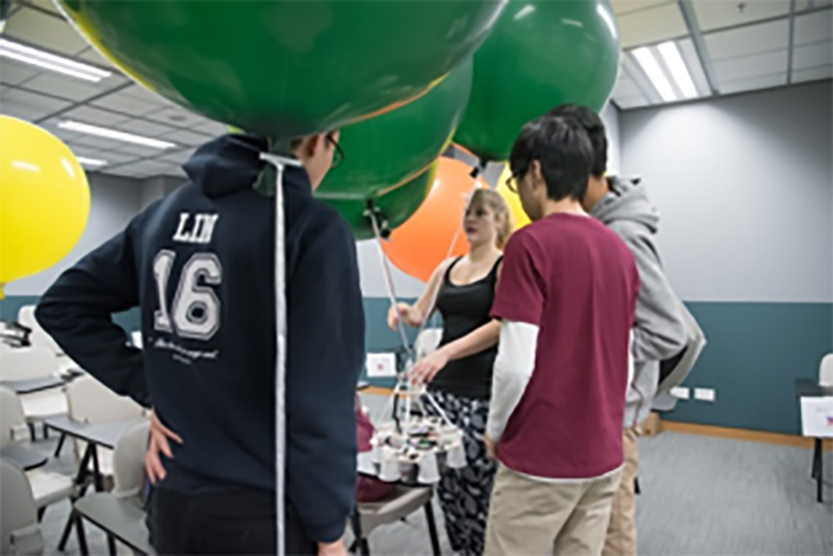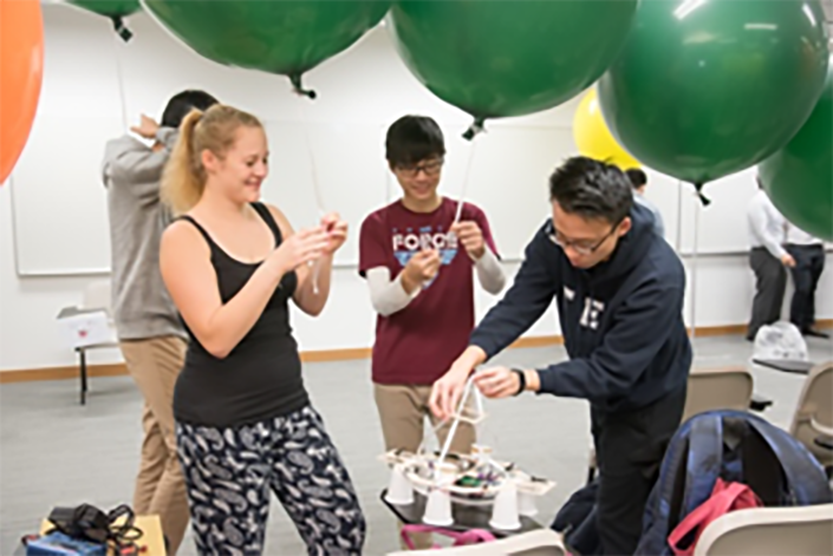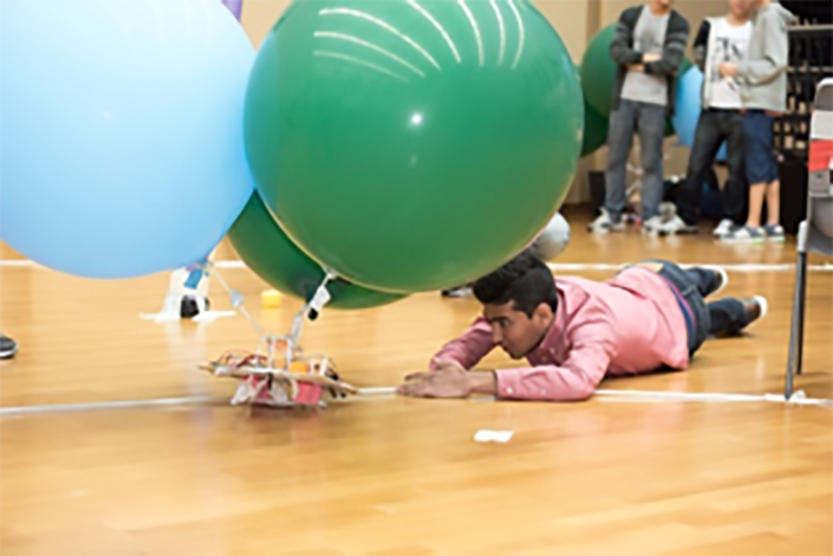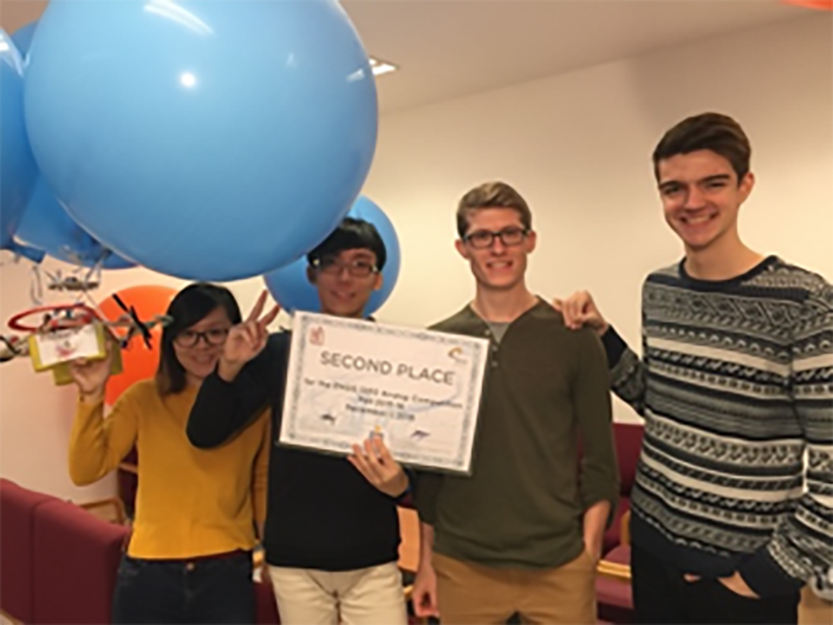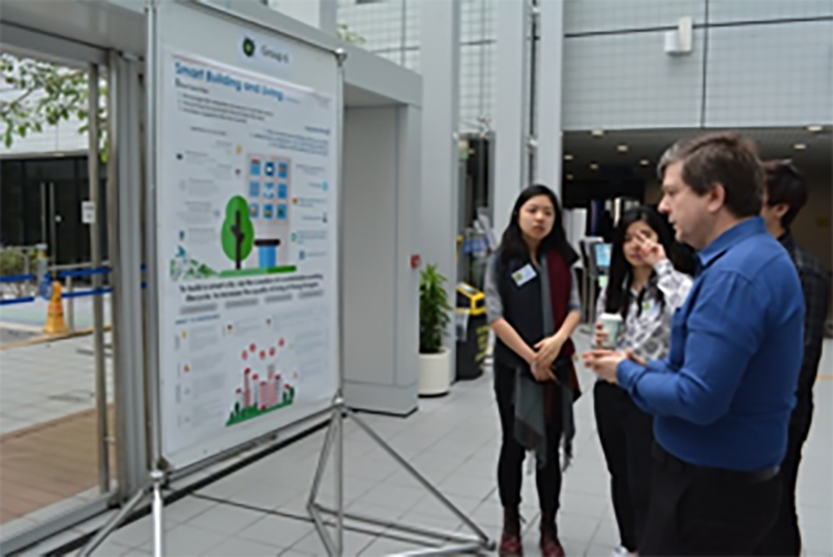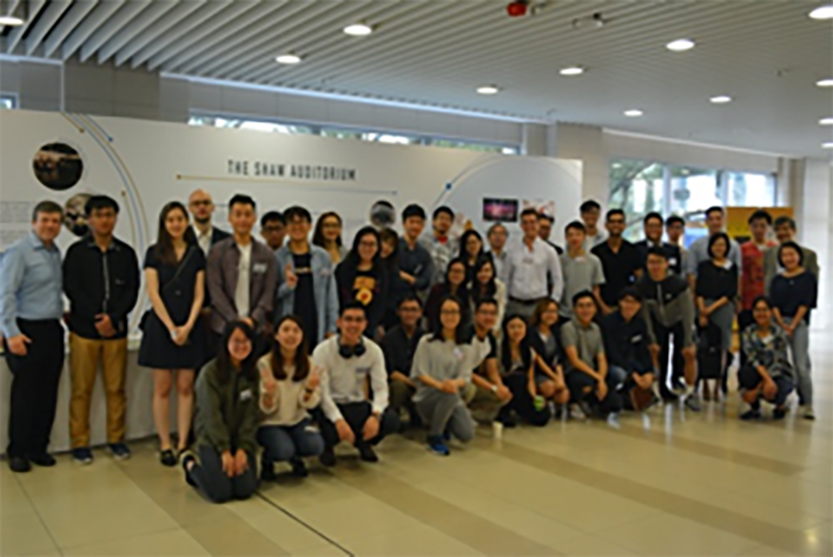Beyond the Melting Pot: Strategies and Challenges of Internationalisation in Engineering Education
By Nicole Lai
“I want to see my students, our students, not only learning about the world at the international level but also their own context so that everyone is ready and skilled in doing that. Sharing their own insights” said Mr. Paul Lavigne, HKUST.
The process of globalisation is now challenging local cultural assumptions and reshaping ideas about learning and teaching in the light of increasing international contact. Our students are going to be world citizens who are going to work across cultures in the future, be it online or offline, to collaborate and negotiate among themselves to find the best solutions to the world’s complex problems that go beyond their own local perspectives or interest. Therefore, the role of higher education is to nurture future graduates with the ability to develop the understanding of differences, interact effectively with others, and face the complex uncertainties of the future. Mr. Paul Lavigne, a HKUST-affiliated member, is dedicated to equipping students with technical knowledge and skills while also creating intercultural learning opportunities through two common core courses and the First Year Cornerstone Engineering Design Project Course, an experiential project, with the School of Engineering. Further, Paul also sees the importance of considering student diversity as something more than their home countries.
Diversity: Reimagining and Gearing Students Up for the Future
Nowadays, the rise in student mobility in global education has led to a shift in student composition in many courses in Hong Kong. In these three courses that Paul involves at HKUST, around 10% of the class is from overseas, another 10% is from the Mainland, and the remaining 80% is local students. What’s more, as Paul remarked in the interview, diversity does not merely mean to have a high percentage of international students in the class. It also means the differences in learning styles, cultural norms, upbringing experiences, disciplines, and individual perceptions of differences. Even within the local students, there is a huge range of backgrounds. This is diversity.
As students come together to learn inside a melting pot, where they are exposed to different views, opinions, and ideologies, (intercultural) learning will not be effective without educators’ effort to develop knowledge to internationalise the curriculum and facilitate intentional group learning. Often, we want to take advantage of mixing international and local students, yet we will gradually realise this can be done even with 100 per cent local students. Even though students are from the same city, they are very different in many ways.
The way we engage in the creation of knowledge is often created through socio-cultural interactions with others. While the complex dynamics of our global society put us to a state of multicultural coexistence, we should always bear in mind the top three elements, raised by Deardorff, to develop intercultural competence: 1) awareness, valuing and understanding of cultural differences; 2) experiencing other cultures; and 3) self-awareness of one’s own culture. The purposes of the internationalisation of learning and teaching cannot be achieved without empowering and inviting all teachers and students from diverse backgrounds to be part of the process and understand differences.
Course Design: Connecting Students to the Larger World
To get the most out of the diversity within the student body, Paul and his colleagues have always embedded international elements and intercultural learning opportunities into the course design, both the common core courses and the First Year Cornerstone Engineering Design Project Course. For the common core courses, ENGG1130 The Impact and Value of Technology Innovation and ENGG1150 Information Technology Revolution: Past, Present and Future, the main objectives are the learning of science and technology development, application, learning and researching, and ultimately the social impacts of these developments. As for the Cornerstone Project course, it is about the experiential learning with hands-on engineering design tasks.
i) Themes
Throughout the interview, we realised the choice of themes for a course is crucial to its success in terms of internationalisation. For ENGG1130, exploring real-world innovations and looking into the future are the key themes. This course enables students to acquire the ability to integrate multidisciplinary technology developments into potential innovative applications. For example in Spring 2016, the theme of “Smart City” was the focus of the course which looked into the values and impacts of technology on smart city stakeholders. The teacher used the real example of the Smart City Airport and Lantau Island Development in Hong Kong to lead discussions and leverage learning among the diverse groups of students. Not only do they have to sort out solutions to meet the challenges, but they also have to think about the social impacts of the technological evolution on the creation of value from a global scale to personal lives. Another course ENGG1150 focuses on the aspect of information technology. It covers the history and looks into the past, present, and future. This particular theme allows students to think from another perspective on how key technology breakthroughs impact our society. From that, they can understand how advanced daily electronic communications from emails, mobile phones, social networking, and imaging technologies led to revolutionary changes in our life.
ii) Case Examples
Unveiling the world of accelerated technology developments, case studies and examples were also drawn from well-known successes and failures of technology companies in Silicon Valley and Asia for students to find inspirations which will in turn help them to create responsible choices for themselves and the world. Another example drew from the 5G cellular development and interconnectivity. In class, students were asked to view and discuss from their home disciplinary perspectives, such as a financial perspective on how to convince companies to invest in this technology while the engineering students would focus on understanding how the 5G technology works and to get it to work. As the world needs people to be able to work together across disciplines, a cross-cultural example like this facilitates students’ learning when they try to see an issue from different perspectives, collaborate with people across disciplines, and approach the issues not only on a global level but also on a local level. Furthermore, the teacher asked students to share their personal experiences, whether in their disciplines or back in their home countries, when it comes to certain topics. Having students as inputs is essential in co-creating richer learning in both disciplinary and intercultural knowledge.
iii) Learning by Doing
Apart from the real-world themes and cross-cultural examples, Paul also reckons the Cornerstone Project course is an invaluable learning experience for first-year engineering students. Students in this course are divided into small design teams and apply the acquired knowledge and skills to design and build an airship together. Throughout the project, students have abundant opportunities to communicate with each other on the designs and their decision-making processes. The course not only provides an experiential learning experience through which students are able to acquire disciplinary knowledge and skills from different Engineering disciplines, but also intercultural learning opportunities before making a final decision on choosing their majors.
iv) Technology
In order to offer the course at scale, where students can learn effectively and spend more time collaborating in class, eight sessions of the course were flipped. The technical heavy components were offered online by producing videos and a series of online quizzes. What’s more, the use of the personal response system (PRS) enabled students to think through some technological questions, mostly opinion questions without a right or wrong answer, and get them ready for a longer in-depth discussion.
Collaboration: Nurturing Global Individuals through Intercultural Learning
Paul reckons that intercultural learning will not happen naturally even if you put international and home students together into a melting pot and that a classroom is an ideal place for diverse students to find common ground. However, it is essential for teachers to facilitate and promote intercultural interactions among students to capitalise on diversity and optimise learning through diverse inputs and interactions.
Besides the choice of themes for a course, design is also one of the key factors to decide whether students can learn in good learning dynamics. Having the common core courses to be mostly lecture-based and the Cornerstone course as an experiential learning opportunity, Paul incorporated internationalisation in both courses in terms of team-based tasks and collaborations. The teaching and assessments are flexibly designed to challenge students to approach a given problem or topic from various perspectives. They are asked to solve complex global issues and investigate the “best” solution based on their backgrounds, knowledge, and intercultural competence.
i) Groupwork
We, as educators, have to maximise students’ learning by providing a physically and emotionally safe space for them to engage in challenging and integrating knowledge to become resourceful and responsible citizens in an ever-changing, diverse world. Teachers who are working with Paul in these common core courses usually assign students into diverse teams, roughly four to five students at most, for most tasks unless it is not a major project, such as in-class group discussions. Students are mixed not solely by their ethnic backgrounds, whether they are international or local students but also the schools, majors, years of study. For example, business students were mixed with engineering students. Sometimes students would make a request and teachers will usually try to honour that request if it fits with the intended idea of having a good mix of students. Having different perspectives can also prepare students to discuss and explore broader issues of global interdependence while learning disciplinary knowledge.
Having students to learn and collaborate towards a common goal in mind enables them to yield higher achievement and make learning effective. It might be easier for us to optimise an experiential learning course, such as the Cornerstone project course where students need to design and work on an airship, as students were required to contribute and pushed to finish a physical object by the end of the course that really gives them the incentive to work together. The teacher even spent six hours in a semester on team-building for students to develop intercultural communication ability and enhance productivity. Despite the fact that not every course has the nature of collaboration, we can always design tasks for students to work collaboratively, as illustrated by the two common core courses we have been looking at. Beside in-class group discussions, reports, and presentations, there was a poster presentation for students to support their written reports. By the end of the semester, students had to present it to the community in the open poster session.
ii) Debates
At times, it is totally fine for students to learn how to disagree and hold a different opinion so that they would be rational inknowing what leads them to that position or decision. By understanding their ideas thoroughly, they exchange ideas with their peers and develop new insights. That gives the other students the opportunity to learn more about what leads to that, especially if there’s a disagreement. There were also debates outside class in one of Paul’s Common Core courses. In terms of global competence, debating on the world’s complex problems helps develop students’ understanding of the importance to appreciate differences and helps them attune to diverse perspectives where they, in the future, need to be responsible and able to communicate effectively with people across the world.
Limitations of Language and Time: Turning Challenges into Opportunities
Now we understand more about how to embed international and intercultural elements in our teaching, we may also want to know how challenging it could be. As Paul put, there are two common challenges – language and time. For the language barrier, international students may be discouraged when they find it hard to communicate effectively with their peers. For example, if there is a single international student in a group, there can be a lot of casual discussions in Cantonese. We do not have a magic solution for that yet we do realise the importance of developing intercultural awareness among students where some of them should be able to make sure everyone in the group is involved in a common language. Having said that, English is not the only solution to the language barrier. When we are placed somewhere else in the world, having another local language, we could also take the challenge to bring differences and people together in diverse ways by designing innovative tasks. The struggles in these disquieting learning contexts and unexpected outcomes might be rewarding in the end. It could be just another experiential learning opportunity for all.
In reality, both teachers and students are pressed for time. Therefore, another challenge is the limited time for 1) teachers to develop intercultural skills in class and 2) students to utilise the knowledge in tight learning schedules. To better address this challenge, as mentioned earlier, we should always incorporate international content and design global complex problems for students to solve them collaboratively with the subject knowledge and skills they have acquired or need to explore. Students need to have the opportunities to understand their familiar contexts and understand a context that they are not familiar with, without skipping out either of these. It is the part that they learn best by being able to take perspectives and embrace differences. Challenging our students throughout the course to investigate different contexts with their own backgrounds is always an excellent way to bring perspectives together and look into the bigger picture of the globe. As a result of internationalising our curriculum, we need to innovate and consolidate the development of youngsters who not only possess the technical skills necessary for exams and careers but who crucially have an understanding of differences. We have to design and facilitate learning opportunities for our students to not only develop an increased awareness of different cultures, including their own culture, but also learn how to discover more about themselves through these common core cross-cultural learning and disciplinary experiential learning.
In short, these three courses created and facilitated students’ intercultural learning largely by developing students’ global competency to appreciate complexity, manage conflicts and the inevitability of change, and foster the interconnectedness between them and the larger community, or even the environment. With internationalisation in teaching and learning, Paul, like many of you, wants to see our students not only learn about the world at the international level but learn about their own context so that they can share it with others and make bigger impacts.
Acknowledgments
The feature story draws on an interview with Mr. Paul Lavigne who generously shared with us his experiences and insights, and we hope we have done justice to the wisdom of his practice in the internationalisation of teaching and learning.
Cite this item
Lai, N. (2020, Aug). Beyond the Melting Pot: Strategies and Challenges of Internationalisation in Engineering Education. CoP – ITL Buzz, 10. Retrieved from https://www4.talic.hku.hk/cop-itl/whats-happening/enewsletters/issue-10/beyond-the-melting-pot/


